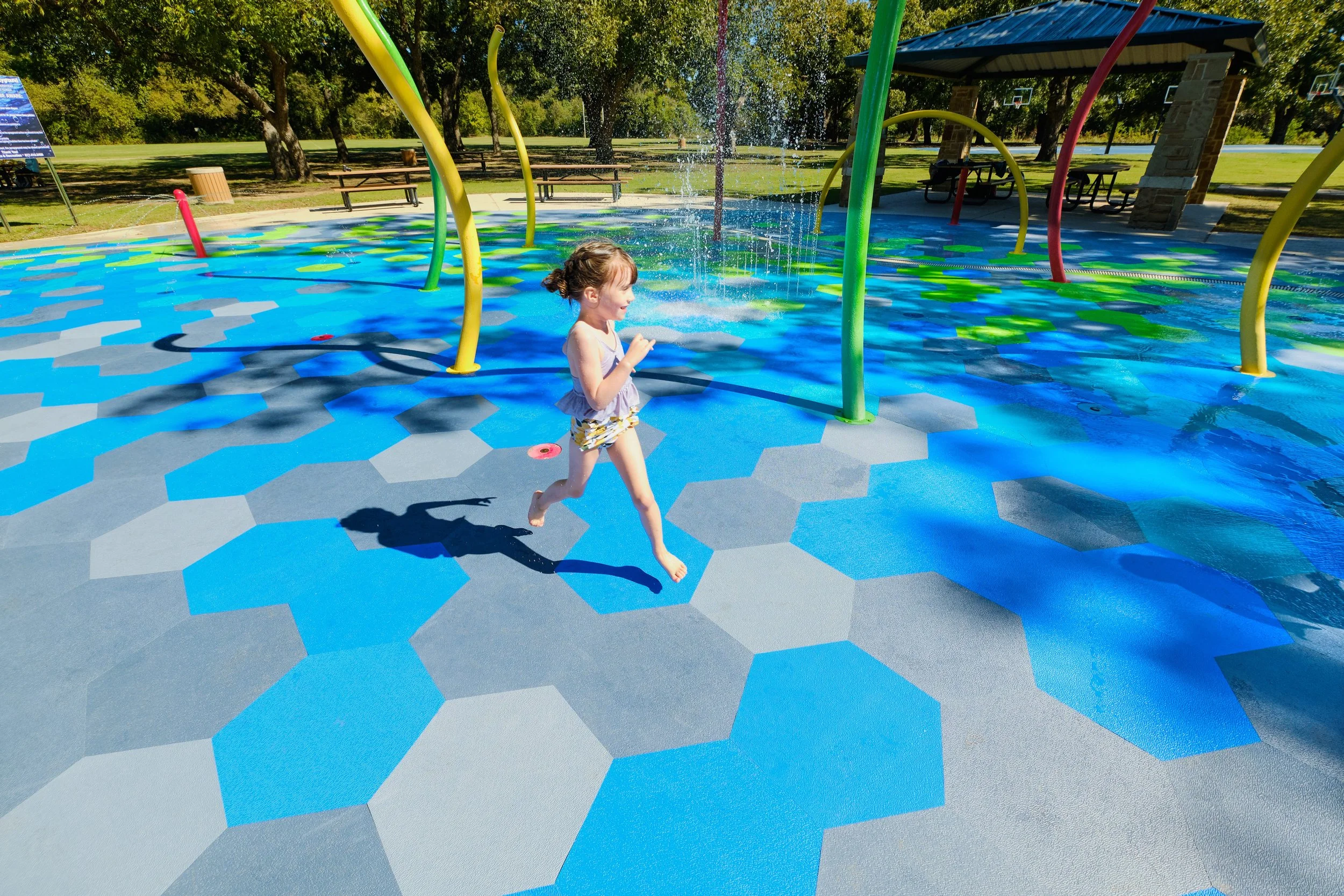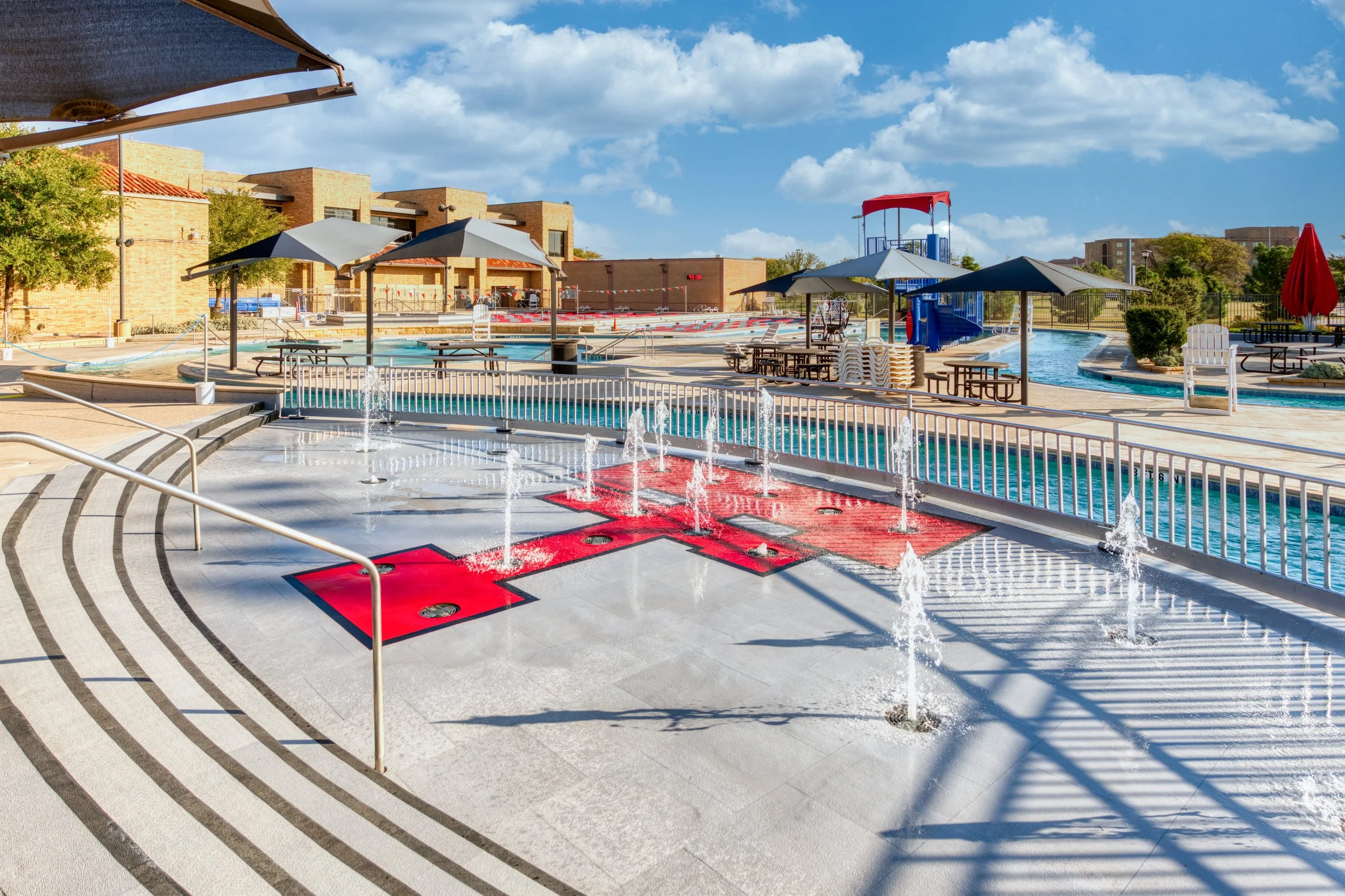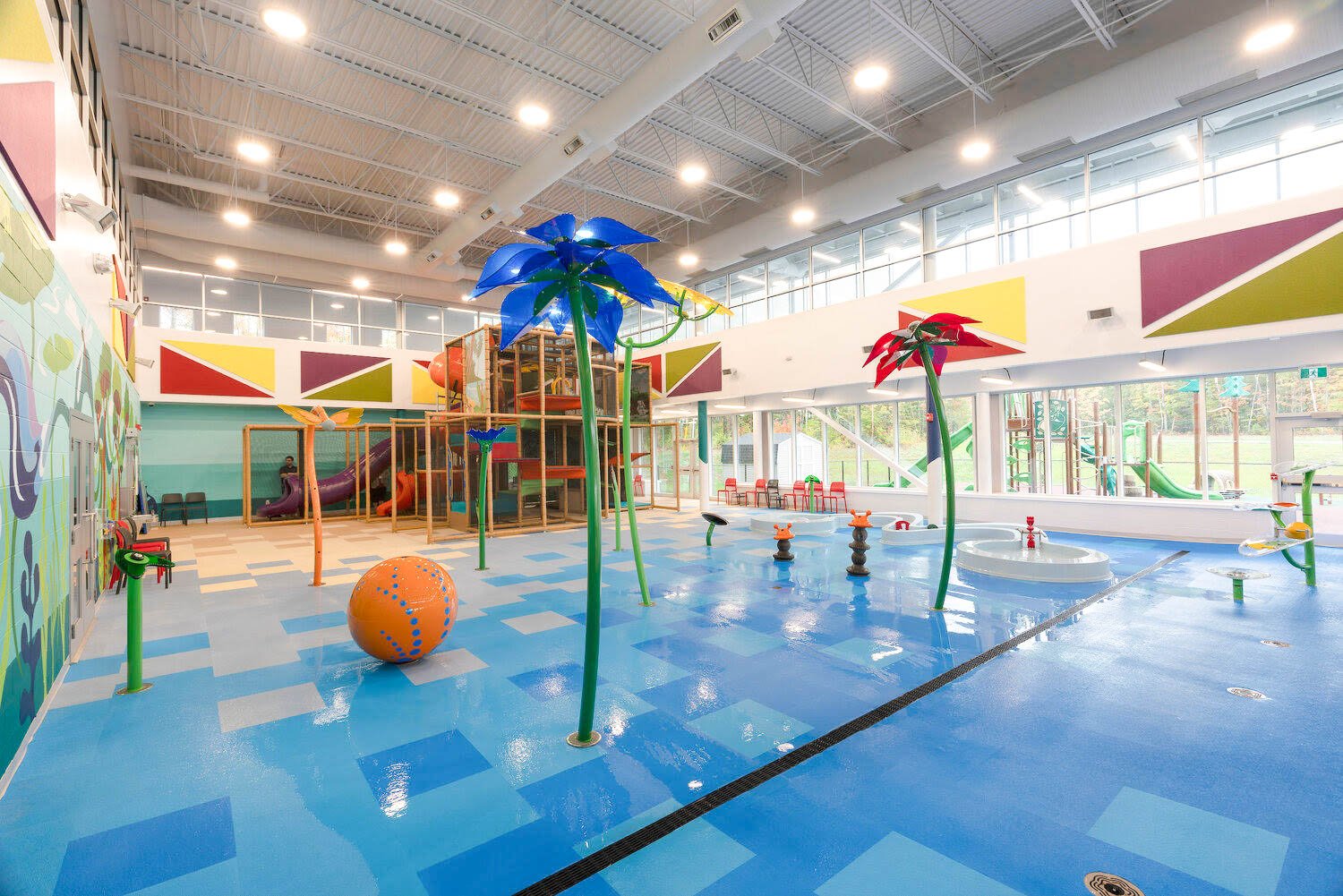Historically in aquatics, surfacing design has defaulted to concrete or hasn't been given much attention at all. Today, more and more facilities are exploring flooring options that increase safety, enhance design, and improve play value. As we head into the new year, be on the lookout for these surfacing trends that are increasing in popularity on pool decks and splash pads around the world.
1. THEMED DESIGNS
A greater number of splash pad and pool deck surfaces have been featuring theming to complement and enhance facility or play fixture designs. From tropical treasure hunts and undersea environments to desert landscapes and forests, adding this attention to detail at the surface level provides a more fully-themed experience for guests. Be on the lookout for these immersive flooring options as designers use surfacing as a way to tie projects together.
2. SURFACING CERTIFIED FOR AQUATIC PLAY
Since 2019, a standard has recommended that splash pad surfacing materials meet certain criteria. NSF/ANSI/CAN 50:26 uses third-party testing to evaluate products for slip-resistance, impact attenuation, chemical resistance, UV resistance, cleanability, and impermeability. As properties have begun to renovate existing facilities and plan for new ones, many have looked to this standard as a way to follow recommended best practices.
3. ACCESSIBLE OPTIONS
Accommodating guests of all ages and abilities is important to any facility design and surfacing can help achieve this goal. Cushioned and slip-resistant flooring options can allow guests to feel more sure-footed as they interact with environments traditionally known for being slippery when wet. Softer surfaces accommodate guests crawling or sitting on floors at aquatic facilities. Providing visual or tactile cues that indicate depth, surfacing, or feature transitions are further measures that help guests navigate these locations. Making facilities as accessible as possible allows the greatest range of guests to enjoy the amenities offered by them.
4. BRIGHT, GEOMETRIC PATTERNS
Many pool decks and splash pads are opting for fun patterning created by colorful, geometric shapes as a way to increase visual interest. Adding these designs at the surface level has proven to drastically improve the look of facilities that have been retrofitted.
5. INTEGRATING ACTIVITIES
Certain flooring types can be designed to add activities to an aquatic surface. These can be games like hopscotch or checkers, paths to follow, hopping activities, objects to find or count, and life-sized 2D objects that inspire young imaginations. Adding these options into a surfacing design has the ability to increase play value and engagement at facilities.
6. COLOR GRADIENTS
As greater emphasis to design has been placed on flooring surfaces, adding color gradients has been a popular trend, especially those that evoke natural elements like shorelines. This effect is achieved through bands of color, mosaic effects, or geometric patterning.
8. EASE OF SANITIZATION
Given the COVID-19 pandemic, many facilities are imposing more stringent cleaning protocols to ensure guest health and safety. As a result, surfacing options that don't support microbial growth have been increasing in popularity. Attention to cleanability and impermeability can be helpful to improve ease of maintenance at these locations and provide a marketable benefit to patrons.
9. DELINEATED ACTIVITY ZONES
Splash pad designs have increasingly included a diversity of features that cater to different levels of development and age groups. Likewise, more play spaces are emerging that combine different zones of play such as a dry playground that transitions to a splash pad or a splash pad that transitions to a pool. As a result, using surfacing design to more clearly delineate different play areas has become a popular option.
10. DESIGN FOR MULTI-GENERATIONAL ENGAGEMENT
Parks, playgrounds, and splash pads are beginning to focus on design not only for children, but also for the comfort and enjoyment of multi-generational guests (who make up about 50% of patrons). This can be accomplished by adding shade structures, seating, and play elements that accommodate adults. At the surfacing level, cushioned, non-abrasive options provide comfort to sit or play on the floor, making it easier to interact with little ones in these environments.
Have you noticed any other aquatic surfacing trends that you would add to our list? We'd love to hear about them in the comments below!
If you’d like to discuss the ways that Life Floor can help achieve any of these items at a specific aquatic facility, contact our team to learn more.















